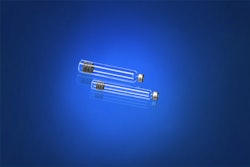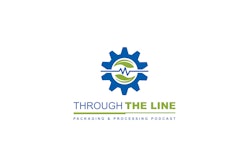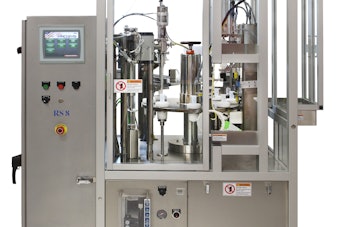
In my last column, “The future of drug production: manufacturing takes on a whole new meaning," I discussed how potentially disruptive technologies like pharmacogenomics, a.k.a. personalized medicine, may change the way pills are manufactured and packaged in ways most have not begun to think of yet. In this column, we shift to the medical device side of the world and consider the future of device design, manufacturing, and packaging.
Historically, the medical device and the pharmaceutical industries have followed the same business model, i.e., the more devices or pills the manufacturer sells, the more revenue they make. Pharmacogenomics has the potential to obliterate that business model. Another new and potentially disruptive technology, 3D printing, may do the same to the medical device industry.
Although 3D printing technology has been under development for nearly 30 years, it has gained popularity recently for several reasons: 1) President Obama highlighted the technology in his 2013 state of the union message 2) the news story earlier this year describing the ability to 3D print a functioning handgun that is “invisible” to the TSA and 3) the almost magical ability to create physical objects from nothing—like the Star-Trek transporter or food replicator.
Not surprisingly, this technology is infiltrating virtually every industry in every corner of the globe and medical technology is no exception. Some of the most interesting applications of 3D printing are in medical technology.
TSA concerns aside, it stands to reason if we can print a gun, we should be able to print a medical device. In fact, this question was originally proposed in a recent blog . And believe it or not, only months later we’re actually doing it in of all places—Haiti!
Simple medical devices like umbilical cord clamps are currently being “manufactured” in Haiti using 3D printers on-demand in local clinics. So imagine this not so hypothetical scenario: a surgeon is doing a procedure and calls for an instrument. But instead of the assistant picking up an existing instrument from a tray, the instrument is produced in the 3D printer (using voice recognition of course!) and is immediately ready to use in the patient. When the procedure is complete, the instrument is broken down and the materials are put back into the printer for use in the next patient. What are the advantages of such a scenario?
From the hospital’s perspective, gone is the necessity for ordering and inventorying a litany of surgical instruments and medical devices, each coming in any number of shapes and sizes. In addition, we will no longer need to clean and sterilize surgical instruments… we’ll simply make one aseptically when we need it, use it, and throw it away. Better yet, recycle the materials to make the next one.
From the medical device manufacturer’s perspective, we don’t have to worry about manufacturing instruments and devices, sterilizing them, we don’t have shelf life and stability concerns, or even perhaps putting the product into a package at all. For Star Trek fans, do you remember the concept of the food replicator? Food was simply “printed” on-demand with no packaging necessary—Gene Roddenberry was a very smart guy. If we do need a package, we simply ask the printer to print the device in the package! So the bottom line is simple: if we can do this in Haiti, we should be able to do it anywhere.
But why limit the 3D printing of medical devices to hospitals and clinics? Why not do it at home? This may not be as far off as some think. Soon home-based 3D printers will be as ubiquitous as home-based computers. Don’t think so? Home-based 3D printers that print chocolate are available right now! So if we can 3D print chocolate at home, how long until we can 3D print medical devices? From a regulatory perspective, how will FDA regulate 3D printing of medical devices at home?
New business model
Back to the business model—just like pharmacogenomics, if we cannot “sell” the business model, i.e., make it palatable to the medical device industry, then no matter how “wicked cool” the technology is, it will never succeed.
Consider this: Home-based healthcare has been a growing trend for years. So when, not if, patients can 3D print their own medical devices at home, how many medical devices will device manufacturers be selling?
Maybe the medical device industry needs to consider a new business model. That is, instead of selling medical devices presterilized in separate packages, they sell medical device designs that can be input into a 3D printer, or “prescribed” by a physician just like a drug. Just like I described in my previous column, both business models can be very successful, but they are very different. What’s the first up in making this model a reality? To begin to think differently! Can you name one technology that existed prior to someone coming up with the idea and developing it?
Regulatory implications
Beyond the technical opportunities and challenges that these technologies offer, the regulatory implications are in many ways even more intriguing. Although the details are beyond the scope of this current column, just days ago the U.S. Food and Drug Administration released, “Paving the way for personalized medicine: FDA’s role in a new era of medical product development.” Of greatest importance is that this is the first major public document from FDA that begins to address personalized medicine from both a pharmaceutical as well as a medical device perspective.
Taking the regulatory concerns even further, consider this question: What is the relationship between 3D printing medical devices and pharmaceutical compounding?
For those who read my August column, “The Case of the New England Compounding Center: How might this tragedy lead to an even bigger one," I explored the root cause of the NECC case and suggested that if we are not careful when crafting new regulation to prevent such tragedies from occurring again, we may simultaneously inhibit seemingly dissimilar technologies that have yet to be developed. On the surface, the NECC case would seem to impact only the compounding industry; but the ramifications could go far beyond compounding and drastically affect the medical device industry in ways most people have yet to imagine.
With that insight, personalized medicine and pharmaceutical compounding are really one and the same. And now with the ability to 3D print personalized medical devices at home looming, the lines dividing these technologies are becoming even more fuzzy—all the more reason we need to tread cautiously when creating new regulation. As I’ve discussed before, it’s one thing to measure the number of people harmed or killed because a medical product is not “safe enough”—it’s quite another thing to count the number of people harmed or killed because they don’t have access to a medical product because we’ve raised the “regulatory burden” to the point the manufacturer decides it’s just not worth bringing the product to market.
Materials limitations
Looking to the future, one of the greatest limitations of 3D printing technology is the limited selection of usable materials. Historically, the materials used by 3D printers have been relatively rigid and brittle. More recently, some elastomeric materials have become available. In the medical world, 3D printer biomaterial selections are even more limited. Although there are a few “FDA friendly”—i.e., biocompatible materials—that are starting to be used, we would be hard-pressed to find an actual “bio-friendly” material. Until these material selection limitations are better addressed, it will be difficult for both medical device designers as well as packaging professionals to best utilize the true potential of this technology.
In a now famous example of one of the technologies I have been involved with is the 3D printing of a permanent implant—in this case, a bioabsorbable tracheal splint. But the same idea can be applied to all areas of the body. What’s the process? Here’s one possibility: 1) scan the patient via CT or MR, 2) design a “personalized” implant based on the scanned data 3) send the design to the 3D printer in the hospital and 4) implant into the patient. And it’s actually not a new idea—in some cases, we are actually doing it now!
But like all new technologies, there are many questions to consider including 1) how do we test such devices… if at all? 2) what’s the regulatory pathway to market? PMA? 510k? HDE? CDE? In the example cited, an orphan indication (i.e., tracheobronchomalacia in newborns) was chosen. But what about making “custom” devices for the masses? In the spirit of looking for similarities where no similarities seem to exist, this is exactly what happened in the New England Compounding Center case. Is this a combination product? And bioabsorbable materials (i.e., polycaprolactone) present many regulatory challenges. Maybe we will need to create a new regulatory pathway to market such technologies? For that matter, should FDA regulate this at all? This can be viewed as personalized medicine for medical devices, and like pharmaceutical compounding, it can be argued it is the practice of medicine and therefore outside the jurisdiction of the FDA… at least for now.
In the past, another limitation of 3D printing technology has been physical size (i.e. the larger the part the more expensive to produce, whereas the smaller the part the more difficult to produce). Today, small-scale 3D printing is possible. One example is the 3D printing of tiny cages to contain bacteria for the control of infection. So how long until we can 3D print at the nanoscale? We can even do this now but that’s a topic for another column.
3D printing living tissue
I cannot end this column without sharing what I think is the most “wicked cool” application of 3D printing in medical technology—that is, 3D printing of living tissue. You might think this is pure science fiction—but it’s not, we are already doing it. One example is the 3D printing of tiny human livers. What is the potential impact of this technology?
Beyond the obvious applications like organ transplants, consider the traditional drug development model: we do in vitro (bench-top and/or computational) testing, followed by animal testing, and ultimately human trials. Although we have been developing drugs like this for decades, does it make sense? Not really. It is an extraordinarily inefficient process resulting in 20% to 50% of drug candidates failing when moving from animal to human testing at a cost of up to $500M!
More importantly… we assume if a drug is not safe and/or effective in an animal, it will not be safe and/or effective in a human. But this is not necessarily so. As a result, how many good products have been scrapped because they didn’t work in animals? So for many reasons, this is a very inefficient process and there has got to be a better way!
What if we modify the model? What if we eliminate animal testing and use the following model: in vitro (bench-top and/or computational testing) followed by “engineered human tissue testing” and finally human trials?
Now that we are beginning to 3D print actual living tissues like tiny human livers, this is not nearly as far off as some might think. And it’s an interesting example of the convergence between the medical device and pharmaceutical industries, both benefiting synergistically by improving the drug development process. Who else would be happy with this new drug development paradigm? Those who are not keen on animal testing to begin with (i.e., PETA – the People for the Ethical Treatment of Animals, also known as the People for the Eating of Tasty Animals!).
In the late 1960s, many of the devices used in the original Star Trek series were pure science fiction at the time, for example, floppy disks, cell phones, etc. Today, not only have they become a reality but some have become ubiquitous as well. But some of Gene Roddenberry’s ideas still remain science fiction—or do they?
To most, the idea of the transporter, which can “dematerialize” a person or object and magically “transport” them or it to some far-off place, is pure science fiction. But consider this: an engineer in the U.S. can design a medical device on a computer and electronically send it (transport) that design to a far-off land like Haiti where a 3D printer can physically recreate the medical device designed by the engineer in the U.S. Not quite as impressive as the Star Trek transporter, but we’re getting there!
The goals of personalized medicine for drugs can be summarized as follows: Deliver the correct drug… at the correct dose… at the correct rate… to the correct patient… at the correct time. All of these goals are becoming achievable. The goals for personalized medicine for medical devices are very similar: Deliver the correct device… in the correct size… at the correct shape… to the correct patient… at the correct time. With 3D printing and the other ideas presented here, all of these goals are becoming achievable as well.
Arthur C. Clarke said, “Any sufficiently advanced technology is indistinguishable from magic.” To some in this audience, the ideas described in my presentations and columns may seem magical. I would certainly hope so. My philosophy is simple: to set the bar high so that we achieve more. If we continue, as many do, to set the bar so low that we just about trip going over it, then what have we accomplished? In his famous “We choose to go to the moon” speech on Sept. 12 1962, President John F. Kennedy said, “We choose to go to the moon in this decade and do the other things, not because they are easy, but because they are hard, because that goal will serve to organize and measure the best of our energies and skills, because that challenge is one that we are willing to accept, one we are unwilling to postpone, and one which we intend to win.”
The first is to set the bar higher—the next step is to figure out how to get over it, and the final step is to go back and repeat step one!





















